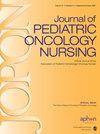癌症儿童治疗结束问卷的编制与内容验证
IF 1.9
3区 医学
Q2 NURSING
引用次数: 2
摘要
目的:描述癌症治疗结束时评估儿童、青少年/年轻人(AYAs)及其父母心理教育需求的措施的制定和内容验证。方法:包括儿科肿瘤科护士和高级执业注册护士在内的专业专家对文献进行了系统回顾,以确定癌症儿童和AYA及其父母的具体治疗结束(EOT)需求,并评估测量这些需求的可用工具。根据这篇综述,最初编制了两份EOT问卷。肿瘤家族咨询委员会(FAB)成员在完善和验证这些问卷时充当了经验专家。FAB成员参与了内容验证过程,在线对问卷进行评分,随后参加了一个焦点小组,以确定内容的有效性(n=6)。结果:最终编制了三份EOT问卷。儿童/AYA问卷分为两个单独的衡量标准,分别用于发展和识字。家长/看护人和AYA问卷各包含38个项目,内容有效性指数得分为100%。儿童问卷包含37个项目,内容有效性指数得分为100%。结论:建立了三份EOT问卷的内容有效性,每一份问卷都有可能引发关于癌症儿童幸存者及其父母所感知的服务需求和潜在差距的信息。需要进一步的心理测量测试来确定问卷的稳定性(测试-再测试可靠性)和结构有效性。本文章由计算机程序翻译,如有差异,请以英文原文为准。
Development and Content Validation of End of Treatment Questionnaires for Children With Cancer
Purpose: To describe the development and content validation of measures to assess the psychoeducational needs of children, adolescents/young adults (AYAs), and their parents at the end of successful treatment for cancer. Method: Professional experts, which included pediatric oncology nurses and advanced practice registered nurses, conducted a systematic review of the literature to determine specific end of treatment (EOT) needs of children and AYAs with cancer and their parents and evaluate available tools to measure these needs. From this review, two EOT questionnaires were initially developed. Oncology Family Advisory Board (FAB) members served as experiential experts in refining and validating these questionnaires. FAB members participated in a content validation process, rating questionnaires online, and subsequently participating in a focus group to establish content validity (n = 6). Results: Three EOT questionnaires were ultimately developed. The Child/AYA questionnaire was divided into two separate measures for developmental and literacy considerations. The Parent/Caregiver and the AYA questionnaires each contain 38 items with a content validity index score of 100%. The Child questionnaire contains 37 items with a content validity index score of 100%. Conclusion: Content validity was established for three EOT questionnaires, each of which has the potential to elicit information regarding needs and potential gaps in services perceived by childhood cancer survivors and their parents. Further psychometric testing is needed to determine stability (test–retest reliability) and construct validity of the questionnaires.
求助全文
通过发布文献求助,成功后即可免费获取论文全文。
去求助
来源期刊
CiteScore
3.10
自引率
0.00%
发文量
0
审稿时长
>12 weeks
期刊介绍:
SPECIAL PATIENTS NEED SPECIAL NURSES
Caring for children with cancer is one of the most technically and emotionally difficult areas in nursing. Not only are you dealing with children and adolescents who hurt, you must reassure and educate families, balance a multitude of other health care professionals, and keep up with ever-changing nursing practice and care. To help special nurses stay aware of the newest effective nursing practices, innovative therapeutic approaches, significant information trends, and most practical research in hematology and pediatric oncology nursing, you need the Journal of Pediatric Oncology Nursing.
The journal offers pediatric hematology, oncology, and immunology nurses in clinical practice and research, pediatric social workers, epidemiologists, clinical psychologists, child life specialists and nursing educators the latest peer-reviewed original research and definitive reviews on the whole spectrum of nursing care of childhood cancers, including leukemias, solid tumors and lymphomas, and hematologic disorders. JOPON covers the entire disease process--diagnosis, treatment, recovery, and survival, as well as end-of-life care.
Six times a year, the Journal of Pediatric Oncology Nursing introduces new and useful nursing care practice and research from around the world that saves you time and effort. Just some of the spirited topics covered include:
Cancer survivorship including later-life effects of childhood cancer, including fertility, cardiac insufficiency, and pulmonary fibrosis
Combination therapies
Hematologic and immunologic topics
Holistic, family-centered supportive care
Improvement of quality of life for children and adolescents with cancer
Management of side effects from surgery, chemotherapy, and radiation
Management of specific symptoms/diseases/co-infections
Medication tolerance differences in children and adolescents
Pain control
Palliative and end of life care issues
Pharmacologic agents for pediatrics/clinical trial results
Psychological support for the patient, siblings, and families
The dynamic articles cover a wide range of specific nursing concerns, including:
Advanced practice issues
Clinical issues
Clinical proficiency
Conducting qualitative and quantitative research
Developing a core curriculum for pediatric hematology/oncology nursing
Encouraging active patient participation
Ethical issues
Evaluating outcomes
Professional development
Stress management and handling your own emotions
Other important features include Guest Editorials from experts in the discipline, Point/Counterpoint debates, Roadmaps (personal insights into the nursing experience), and Proceedings and Abstracts from the annual Association for Pediatric Hematology/Oncology Nurses (APHON) conference.
Your special patients need special nurses--stay special by subscribing to the Journal of Pediatric Oncology Nursing today!
This journal is a member of the Committee on Publication Ethics (COPE).

 求助内容:
求助内容: 应助结果提醒方式:
应助结果提醒方式:


